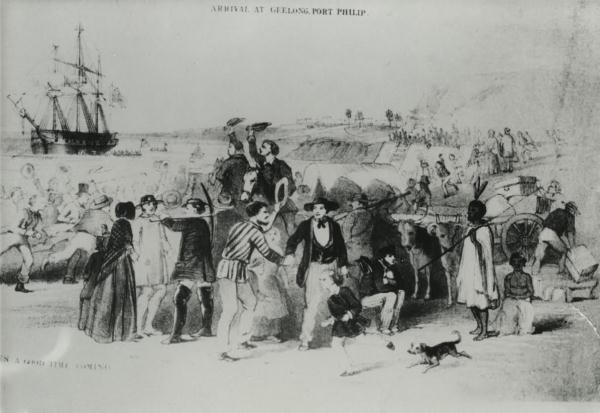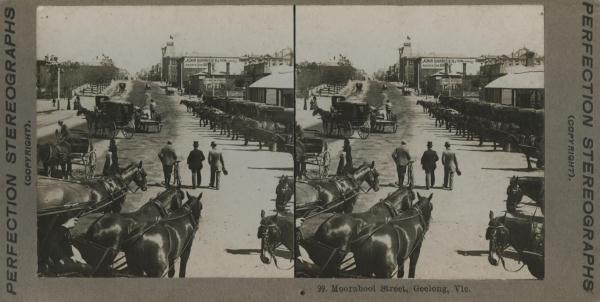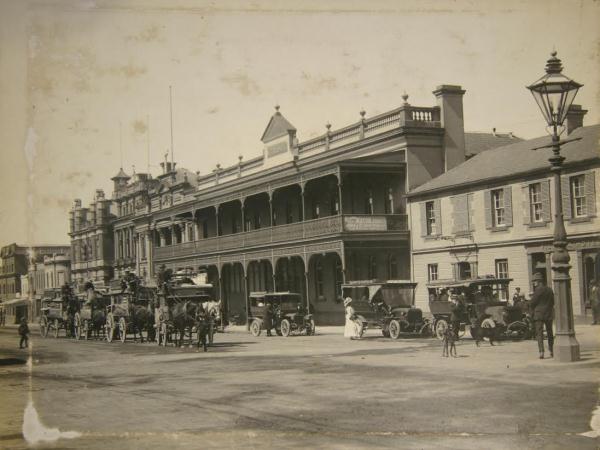
By NOEL MURPHY
Geelong’s earliest days were distinctly bucolic; an agricultural outpost on the edge of the world set up by a clan of Tasmanians looking to boost their fortunes further afield.
The earliest images present a lightly wooded area rising south from the cliffs of Corio before falling away again to the salty waters of the Barwon River. To the west was a heavily forested landscape where travellers from Melbourne occasionally found themselves disoriented.
The first houses were built along the Barwon but a busier settlement quickly emerged closer to the bay along present-day Corio Street. It was modest, rough and entrepreneurial.
Newcomers hungrily eyed the district’s west and the indigenes watched warily as their world was irreversibly changed.
Names like Thomson, Sutherland, Manifold, Stieglitz, Roadknight, Cowie, Stead, Learmonth and Pollock spearheaded the region’s pastoral and grazing interests. But there was no local government, the settlement’s boundaries weren’t clear, settlers lived in shacks and tents and roads were muddy, bumpy tracks at best.
That was 1836 through 1840. Confidence was strong and the tiny town grew steadily, despite a depression in the 1840s, through to the 1850s driven by farming, commerce and their many attendant industries.
Wool was the chief primary industry and would underpin the region’s economy for more than a century to come.
The roaring days of the 1850s Gold Rush spurred extraordinary growth across Geelong and the state as fortune-seekers poured into the country from Britain, China and around the world.
The port powered ahead, welcoming newcomers, commuting residents to Melbourne, sending clippers overseas – from Point Henry and then later the present-day waterfront.
Any pretensions the indigenous folk might have held to maintaining their traditional way of life disappeared rapidly and forever.
Industry burgeoned. Geelong’s initial wooden buildings were quickly replaced by impressive stone structures and the factories and mills generating all manner of top-quality textiles brought the antipodean town a glowing international epithet, Bradford of the South.
The town prospered, grew steadily. Bridges were built, telephone exchanges opened and gas lamps gave way to electric street lights as radio stations, hospitals, football clubs and movie houses sprang up.
Then in 1925 a major turning point in Geelong’s fortunes – not unlike the economic transition it’s undergoing today – occurred with the arrival of US auto-maker Ford, which started producing its model T cars. The days of the horse and cart and their attendant trades and commerce were all but gone forever.
Wool and textiles continued to flourish, commerce too – notwithstanding the devastating Great Depression and two world wars – and Geelong’s manufacturing base ramped up seriously with the 1954 start-up of Shell and hundreds of new jobs.
Immigrants flooded into the city, many living in makeshift packing crate houses, their children learning the basics of English in the schoolyard at North Geelong Primary.
A decade later arrived Alcoa and with its gigantic smelter at Point Henry, an operation that grew to become Victoria’s largest export income-earner.
For years, the auto, aluminium, oil and textile industries stood as the bedrock of Geelong manufacturing, driving numerous smaller industries and constituting a significant jobs base for the region that supported its retail and commerce sectors and dovetailed neatly with a large public sector base as well.
Ongoing political pressure, however, from tariff cuts aimed at encouraging competition, productivity, offshore earnings and cheaper products has irrevocably changed Geelong’s manufacturing base.
Textile industries were the first to feel the heat and the pain. The auto and aluminium industries are following suit, with thousands of jobs going west.
Shell’s manufacturing operations might yet cease, too.
Stepping into the breech now is a raft of new industries, new business enterprises, education and health sectors, many of them quietly growing stronger over the past decade but, now, increasingly important and increasingly well equipped for the new 21st Century’s smarter, hopefully more sustainable economy.
Manufacturing has been the city’s largest employer, accounting for 20 per cent of the workforce, but the public sector, notably Barwon Health, Deakin University, the Department of Education, local government, TAC, WorkCover and the NDIS are increasingly the leading employers. Cotton On and Target continue employing their fair share in the retail sector.
Significant hopes have been invested in transport hub ambitions at Avalon but are still evolving and not without their difficulties. Even so, its prospects as an air, rail, sea and road interchange – with all their job opportunities – cannot be dismissed as Melbourne’s urban sprawl moves inexorably toward Geelong.
A sustainable economy demands research, cutting-edge developments, new areas of expertise, infrastructure, cultural and community assets. In all of these areas, Geelong has been growing from strength to strength.
Research underpins much of the broader economy’s prospects and Geelong’s quotient in this regard is remarkable with breakthroughs across the spectrum, including with stem cells, hydrogen fuel, carbon fibre, graphene, emerging infectious diseases, obesity and much more.
Upgrading the Geelong’s CBD and its waterfront are ongoing long-term projects to transform and enhance Geelong, while growing cultural sophistication – arts, eateries, heritage and suchlike – combined with education, health, recreational assets are important drivers to help new employers lure staff to the region.
To this end, Geelong is aggressively seeking investors by extolling the region’s virtues. Combined with its proximity to the Surf Coast, the Bellarine Peninsula and Otways, it’s not hard to see Geelong as an attractive alternative to the frenetic, gridlocked hubbub of metropolitan Melbourne.








